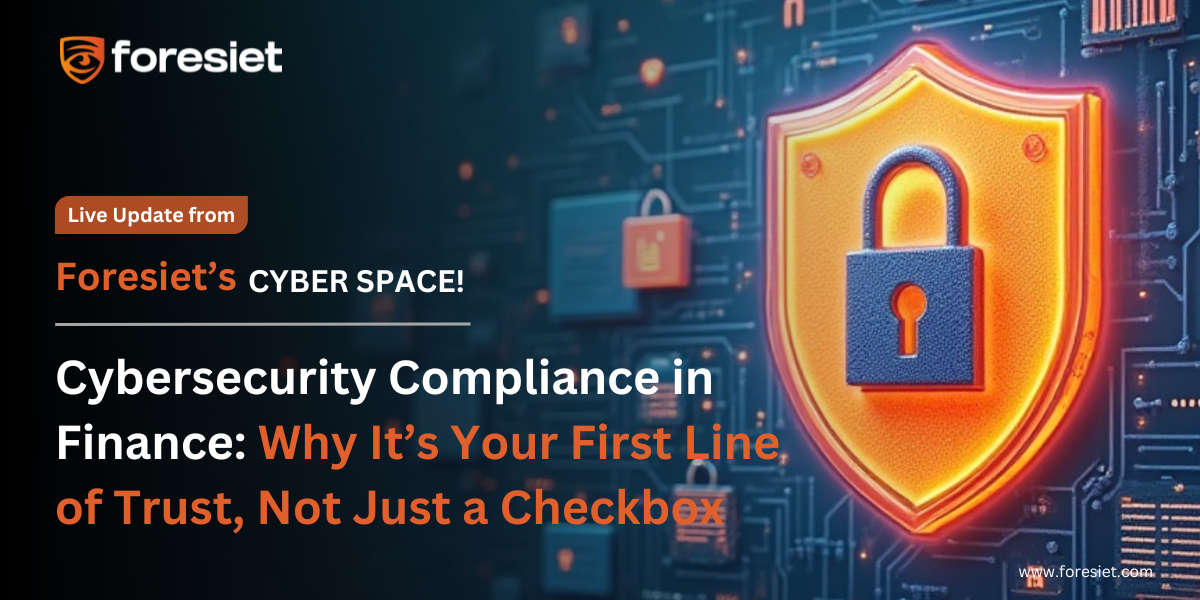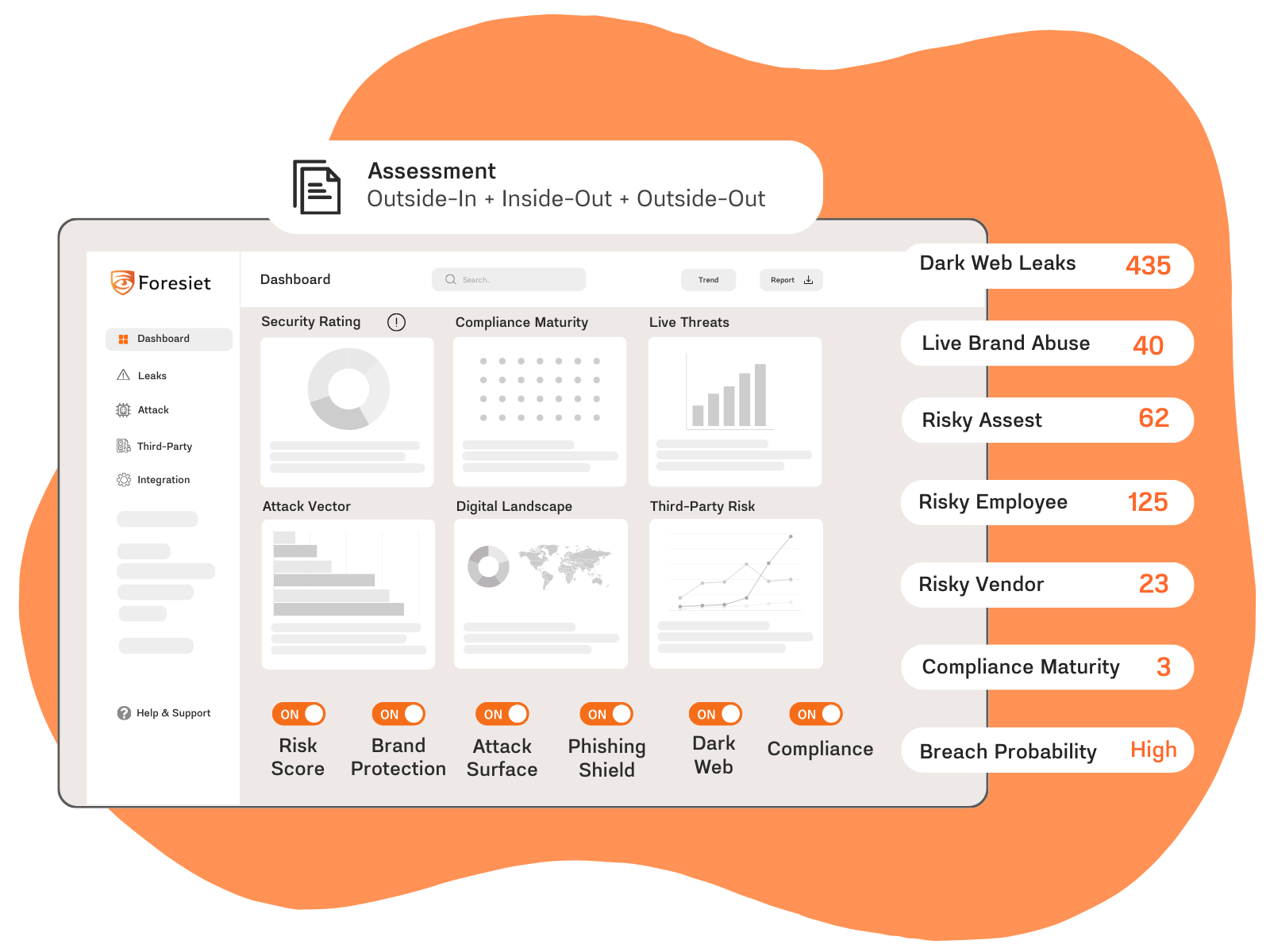Cybersecurity Compliance in Finance: Why It’s Your First Line of Trust, Not Just a Checkbox

Introduction: Compliance Is the Cost of Trust in Finance
In financial services, trust is everything. Clients trust you with their data, their money, and their future. But that trust can vanish overnight—especially when a cybersecurity incident exposes weak governance or regulatory non-compliance.
In today’s threat landscape, financial institutions are more than just attractive targets for cybercriminals—they’re often the most regulated, most scrutinized, and most unforgiving places for a security slip. And as regulations get tighter and cyberattacks more advanced, cybersecurity compliance isn’t just about checking boxes. It’s about proving you take that trust seriously.
Let’s unpack what modern cybersecurity compliance really means in the finance world—and how firms can go beyond the bare minimum to build resilience, credibility, and a lasting security culture.
Why Cybersecurity Compliance in Finance Really Matters
A breach in banking doesn’t just hurt your systems—it shakes public confidence. One leaked customer record or delayed regulatory response can result in massive fines, shareholder panic, and a full-blown PR disaster.
Falling short of frameworks like GLBA, PCI DSS, SEC disclosure mandates, or GDPR isn’t just a legal issue—it’s a brand reputation crisis.
Financial firms that meet compliance standards are often still vulnerable because they've confused security with paperwork. The smartest institutions use compliance as a launching pad, not a final destination. They tie it to ongoing third-party risk assessment, dark web monitoring, and real-time stolen credentials detection to stay ahead of threats—not just report them.
The Evolving Landscape of Financial Cyber Regulations
Today’s financial regulations aren’t static rules—they’re adaptive frameworks designed to keep pace with emerging risks. From the SEC’s recent cybersecurity risk disclosures to GDPR’s strict data protection clauses, regulators are signaling that reactive postures are no longer acceptable.
These compliance frameworks demand:
- Real-time visibility into systems
- Continuous attack surface management
- Detailed incident response plans
- Role clarity and board-level accountability
- Proof of proactive data governance
Firms leveraging threat intelligence services and digital risk rating platforms are best positioned to meet these expectations and act fast when threats arise.
Cybersecurity GRC: A Leadership Responsibility
Governance. Risk. Compliance. Together, they form the core of your cybersecurity blueprint.
- Governance: defines who’s responsible for security decisions.
- Risk: identifies where your weak points are—across internal systems and third-party partners.
- Compliance: ensures your processes align with standards that reduce your exposure and protect your clients.
Yet many institutions still treat cybersecurity GRC as an annual review item—missing the fact that real-world attacks don’t wait for board meetings.
Where Financial Firms Fall Short (and How to Fix It)
Here are three major areas where financial institutions often stumble—and what you can do about it:
1. Confusing Compliance with Security
You might pass a compliance audit, but that doesn’t mean your systems are secure. Hackers aren’t looking for non-compliant files—they’re hunting for unpatched systems, misconfigured APIs, or exposed credentials in the wild. Darknet credential leak monitoring and real-time alerts are essential to plug those gaps.
2. Ignoring Third-Party Risks
From cloud providers to payment processors, third-party vendors create new entry points for attackers. A comprehensive third-party risk assessment process must be embedded into vendor onboarding and monitored continuously.
3. Undertraining Employees
Human error remains the #1 cause of data breaches. Anti-phishing software solutions help—but without regular training, even the best tech stack will fall short. Cybersecurity awareness must be ingrained into your culture.
Best Practices: Turning Compliance into Competitive Advantage
Focus on High-Value Assets First
Not everything needs equal protection. Start by locking down your most sensitive systems—payment platforms, customer databases, and trading systems. Use layered defenses, real-time behavior analytics, and access control to reduce risk.
Automate Audit Readiness
Don't treat compliance as a scramble. Make it seamless. Logging, documentation, and access reviews should happen in real-time, not just when an auditor comes calling. Digital risk rating platforms and automated compliance assessment services can make this a reality.
Build a Culture of Security
From boardroom to breakroom, everyone should know their role in safeguarding the organization. Combine zero-trust policies, role-based access controls, and proactive training to reinforce best practices daily.
Use Threat Intelligence Proactively
Threat intelligence services aren’t just for incident response—they’re critical for predicting and preventing attacks. By integrating this intel into your compliance strategy, you build a smarter, faster, and more resilient security posture.
Don’t Let Compliance Be Your Weakest Link
At its core, cybersecurity in financial services is about safeguarding trust. That trust is built on consistent, transparent, and forward-looking risk management practices.
Organizations like Foresiet help financial institutions move beyond reactive compliance by integrating digital risk governance with advanced threat detection, brand protection services, and dark web monitoring. Whether it's continuous third-party risk assessment or proactive stolen credentials detection, aligning your people, tools, and policies is the new standard.
Conclusion: From Compliance to Confidence
Cybersecurity compliance isn’t just an IT issue—it’s a business growth strategy. Institutions that embrace it as part of their DNA don’t just avoid fines—they attract clients, impress regulators, and deter attackers.
In a world where threats evolve daily, make your security evolve faster. Whether you're modernizing your digital risk platform or rethinking your incident response plan, start with a mindset shift: Compliance isn’t a burden. It’s your first and strongest layer of defense.
Need help transforming your approach? Talk to us. Let’s turn your cybersecurity compliance into a strategic asset.
Protect your brand, reputation, data, and systems with Foresiet's Integrated Digital Risk Platform. 24/7/365 threat monitoring for total peace of mind.


July 10, 2025, 9 a.m.
